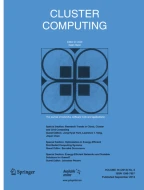Abstract
Feature selection is usually employed before applying case based reasoning (CBR) for Software Effort Estimation (SEE). Unfortunately, most feature selection methods treat CBR as a black box method so there is no guarantee on the appropriateness of CBR on selected feature subset. The key to solve the problem is to measure the appropriateness of CBR assumption for a given feature set. In this paper, a measure called localized neighborhood mutual information (LNI) is proposed for this purpose and a greedy method called LNI based feature selection (LFS) is designed for feature selection. Experiment with leave-one-out cross validation (LOOCV) on 6 benchmark datasets demonstrates that: (1) CBR makes effective estimation with the LFS selected subset compared with a randomized baseline method. Compared with three representative feature selection methods, (2) LFS achieves optimal MAR value on 3 out of 6 datasets with a 14% average improvement and (3) LFS achieves optimal MMRE on 5 out of 6 datasets with a 24% average improvement.
Similar content being viewed by others
References
Boehm, B., Abts, C., Chulani, S.: Software development cost estimation approaches: a survey. Ann. Softw. Eng. 10(1–4), 177–205 (2000)
Vergara, J.R., Esté, P.A.: A review of feature selection methods based on mutual information. Neural Comput. Appl. 24(1), 175–186 (2014)
Fernandes, S.L., Gurupur, V.P., Sunder, N.R., Arunkumar, N., Kadry, S.: A novel nonintrusive decision support approach for heart rate measurement. Pattern Recognit. Lett. (2017). https://doi.org/10.1016/j.patrec.2017.07.002
Keung, J.W., Kitchenham, B.A., Jeffery, D.R.: Analogy-X: providing statistical inference to analogy-based software cost estimation. IEEE Softw. Eng. Trans. 34(4), 471–484 (2008)
Guyon, I., Elisseeff, A.E.: An introduction to variable and feature selection. J. Mach. Learn. Res. 3, 1157–1182 (2003)
Yu, L., Liu, H.: Feature selection for high-dimensional data: A fast correlation-based filter solution. In; proceedings of the ICML (2003)
Battiti, R.: Using mutual information for selecting features in supervised neural net learning. IEEE Trans. Neural Netw. 5(4), 537–550 (1994)
Esté, V., Pablo, A., et al.: Normalized mutual information feature selection. IEEE Trans. Neural Netw. 20(2), 189–201 (2009)
Liu, H., et al.: Feature selection with dynamic mutual information. Pattern Recogn. 42(7), 1330–1339 (2009)
Peng, H., Long, F., Ding, C.: Feature selection based on mutual information criteria of max-dependency, max-relevance, and min-redundancy. IEEE Trans. Pattern Anal. Mach. Intell. 27(8), 1226–1238 (2005)
Hu, Q., et al.: Measuring relevance between discrete and continuous features based on neighborhood mutual information. Expert Syst. Appl. 38(9), 10737–10750 (2011)
Hall, M.A.: Correlation-based feature selection for machine learning. The University of Waikato, Hamilton (1999)
Cover, T.M., Thomas, J.A., Kieffer, J.: Elements of information theory. SIAM Rev. 36(3), 509–510 (1994)
Arunkumar, N., Kumar, K.R., Venkataraman, V.: Automatic detection of epileptic seizures using new entropy measures. J. Med. Imaging Health Inform 6(3), 724–730 (2016)
Menzies, T., Krishna, R., Pryor D.: The promise repository of empirical software engineering data. (2015)
Van Hulse, J., Khoshgoftaar, T.M.: A comprehensive empirical evaluation of missing value imputation in noisy software measurement data. J. Syst. Softw. 81(5), 691–708 (2008)
Shepperd, M., MacDonell, S.: Evaluating prediction systems in software project estimation. Inf. Softw. Technol. 54(8), 820–827 (2012)
Kitchenham, B.A., et al. What accuracy statistics really measure [software estimation]. In: Proceedings in Software, IEE (2001)
Demšar, J.: Statistical comparisons of classifiers over multiple data sets. J. Mach. Learn. Res. 7, 1–30 (2006)
Kampenes, V.B., et al.: A systematic review of effect size in software engineering experiments. Inf. Softw. Technol. 49(11), 1073–1086 (2007)
Rosenthal, R.: Parametric measures of effect size. In: Cooper, H., Hedges, L.V., Valentine, J.C. (eds.) The Handbook of Research Synthesis, pp. 231–244. Russell Sage Foundation, New York (1994)
Cohen, J.: Statistical Power Analysis for the Behavioral Sciences, 2nd edn. Academic Press, Hillsdale (1988)
Author information
Authors and Affiliations
Corresponding author
Rights and permissions
About this article
Cite this article
Liu, Q., Xiao, J. & Zhu, H. Feature selection for software effort estimation with localized neighborhood mutual information. Cluster Comput 22 (Suppl 3), 6953–6961 (2019). https://doi.org/10.1007/s10586-018-1884-x
Received:
Accepted:
Published:
Issue Date:
DOI: https://doi.org/10.1007/s10586-018-1884-x
